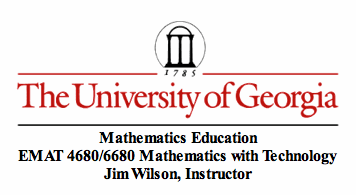

1. Consider the given problem. The center of a desired circle will lie along a line from the center of the given circles with the specified point. Why?

2. We need to find another locus for the center of the tangent circle. Consider the problem as solved. We would have this configuration:

3. Then, if we added the lines through the centers,

4. we would have this situation. Now consider the segment from the center of the desired circle to the center of the second given circle.

5. This segment is always of length the sum of the radius of the desired circle plus the radius of the given circle that did not have a specified point. The same distance can be laid off along the line through the given point from the center of the desired circle, by constructing an additional circle of the same radius with center at the designated tangent point:

6. Now, an isosceles triangle is formed, like so,

7. and therefore the center of the desired tangent circle lies along the perpendicular bisector of the base of this isosceles triangle, as follows, and now we have a construction of the desired circle. That is, construct a line through the center of the circle with the designated point of tangency and construct a circle of the same radius as the second of the given circles with the designated point as center. The intersection of the line and circle will allow construction of the base of the isosceles triangle and hence allow location of the center of the desired circle. The construction follows.

8. Given the construction, however, consider the locus of the center of all such circles tangent to the two given circles. With GSP, we can animate around the circle and trace the locus of the center as follows:

9. If the center of the constructed circle is connected by segments to the centers of the two given circles, it is immediate that the sum of the segments is the same as the sum of the radii of the two given circles. This the sum is a constant and therefore the locus of the centers of the tangent circles is an ellipse with foci at the centers of the given circles.

10. The red line in the picture, that is in your construction, is always tangent to the locus -- the ellipse. Do a trace of the line as the tangent point of the contstructed circle moves around the large circle. An envelope of lines is produced all tangent to the ellipse. This is essentially the underlying technique of folding wax paper to define an ellipse by the envelope of folds.
Repeat the analysis and adapt the contstruction to find the second tangent circle.